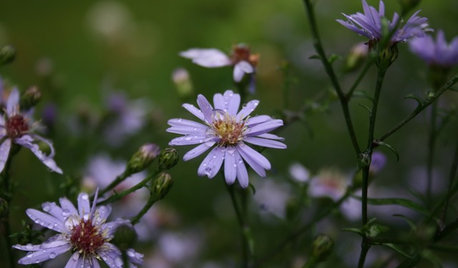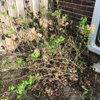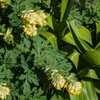what plants do you have in sandy soil? long post
domino123
10 years ago
Related Stories

GARDENING GUIDESGardening Solutions for Dry, Sandy Soils
Has your desert or beachy site withered your gardening creativity? Try these ideas for a beautiful, easy-care landscape
Full Story
GARDENING GUIDESGet the Dirt on Your Garden’s Soil
Understand how your soil supports your plants so you can ensure your garden’s success
Full Story
GARDENING GUIDESThe Poop Scoop: Enrich Your Soil With Good Old Manure
Get over the ick factor already — this natural super-ingredient for soil has so many benefits, you'll wonder why you ever went chemical
Full Story
GARDENING GUIDESHow to Stop Worrying and Start Loving Clay Soil
Clay has many more benefits than you might imagine
Full Story
GARDENING GUIDESHave Acidic Soil in Your Yard? Learn to Love Gardening Anyway
Look to acid-loving plants, like conifers and rhododendrons, to help your low-pH garden thrive
Full Story
GARDENING GUIDESInvite Cellophane Bees to Your Garden by Providing Patches of Bare Soil
Look for cellophane bees (Colletes) pollinating flowering trees and shrubs in U.S. gardens this spring
Full Story
LANDSCAPE DESIGNFlood-Tolerant Native Trees for Soggy Soil
Swampy sites, floodplains, even standing water ... if you've got a soggy landscape, these trees are for you
Full Story
GARDENING GUIDESHow to Pick a Mulch — and Why Your Soil Wants It
There's more to topdressing than shredded wood. Learn about mulch types, costs and design considerations here
Full Story
GARDENING GUIDESGardening Solutions for Heavy Clay Soils
What’s a gardener to do with soil that’s easily compacted and has poor drainage? Find out here
Full Story
FLOWERS6 Overlooked Asters for Tough Spots
Whether your garden has baking sun or dry dense shade, boggy soil or sandy gravel, there's an aster for that
Full Story









vera_eastern_wa
terrene
Related Professionals
Holly Springs Landscape Architects & Landscape Designers · West Milford Landscape Architects & Landscape Designers · Ashburn Landscape Architects & Landscape Designers · Walnut Landscape Architects & Landscape Designers · Finneytown Landscape Architects & Landscape Designers · Bedford Landscape Contractors · Cerritos Landscape Contractors · Coeur d'Alene Landscape Contractors · Columbine Landscape Contractors · Coram Landscape Contractors · El Reno Landscape Contractors · Framingham Landscape Contractors · Fuquay-Varina Landscape Contractors · Mesa Landscape Contractors · Salmon Creek Landscape Contractorslaceyvail 6A, WV
NHBabs z4b-5a NH
auron22
docmom_gw
domino123Original Author
domino123Original Author
domino123Original Author
User
docmom_gw
Ispahan Zone6a Chicago
NHBabs z4b-5a NH